List of Authors
>>About this blog
Recent blog post
|
[rosemary sea]
August 2, 2016 09:00
This is rosemary sea, which covers "gifts and enjoy yourself" as an essence.
Today, we visited the Ningyocho Classroom of Kogin Sashi Thursday Association Co., Ltd., and talked to Mr. Hiroko Takagi, the director of Kogin Sashishi writer and lecturer.
First, the explanation of Koginzashi.
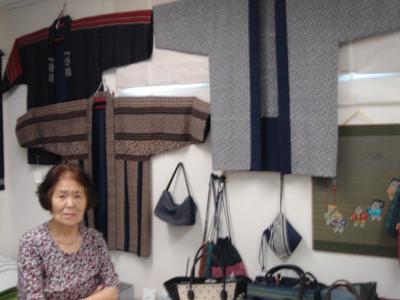
↑ Dr. Takagi. In the back, there is a piece of work.
Traditional techniques, folk art embroidery, and traditional crafts were born in the Tsugaru region of Aomori Prefecture, with unique geometric patterns made with white cotton threads on indigo (navy blue) fabric. The difference from other sashiko is to stabb odd eyes on the vertical weave.
In 1724 (Kyoho 9), the "Farmhouse Frugality Ordinance" strictly regulates farmers' work clothes. The prohibition of cotton kimono, even in the cold region of the northern country, hemp kimono was allowed. You can't lining it.
So the girl in Tsugaru thought.
Fine embroidery is applied to the shoulders, back, and arms of the hemp kimono. The idea of reversal is to thicken the fabric, enhance the heat retention effect, make it durable, and evolve it even more aesthetically.
This is the root of kogin sashimi.
In the Tsugaru region, the stray clothes were called Kogin (both small cloth and small width), so this name was given.
In addition to preserving the tradition, modern creative kogin sashimi arranged with new designs and colorful dyed yarns are also popular. I'm good at this classroom.
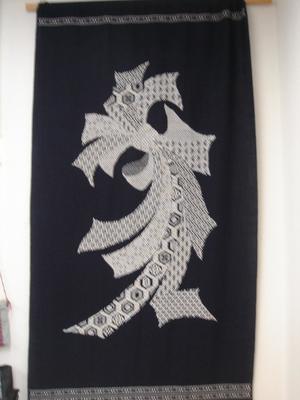 This is an interview with Dr. Takagi. This is an interview with Dr. Takagi.
① About meeting with kogin sashimi
"There was a small sting in a hotel where I happened to go to Lake Towada with my friend and stayed there. Seeing it, she asked her, "What is this?" When I heard that it was stabbing, "Well, where are you doing this?" When I heard that, I was told that no one was doing it right now in Aomori. I was told that if I was collecting it, I was in Aomori City, and I was introduced to that person, but that person was an ethnologist Chusaburo Tanaka. I've already died. When I jumped into that person and talked about the stabbing, he said, "Oh, Tokyo's Hitogane, do you try it?" And I got a small piece, and that's the beginning."
② The story when I became a lecturer at NHK Cultural Center
"I have an acquaintance at NHK, and I asked him," Why don't you try it? " I was told. And I was bored with Saturday Sunday on a two-day weekly holiday, and I was free to say that I should do that."
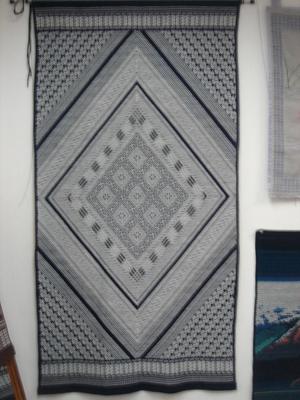 ③ About Yumikai (Yumikai International Art Exhibition) ③ About Yumikai (Yumikai International Art Exhibition)
"I met the chairman. So I'm going to participate when I quit my job at a general company at retirement age, and now I'm the vice president. "
④ About Ningyocho Classroom
"It's been four years ago. Until then, I had a classroom at my home in Ningyocho. I got acquainted with the building owner, "Tofu no Futaba-san." There are also 10 other classrooms in the Kanto region, Kobe, Nagoya and Shizuoka. "
⑤ About your own work
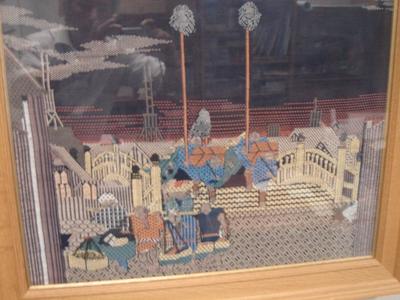
↑ 53rd Nihonbashi, Tokaido
"I'm now doing it when I get an order. With such a hanten, it takes one year to calculate everything from the design to the thread dyeing until then. Each classroom also goes around, so I don't have much time to stabb yourself. There's also a lot of work. Actually, I'd like to have the Tokaido fifty-three order main. I'm doing it from a place where it's easy to do as a design. ・・ ・From orthodox ones to pictorial ones like the fifty-three, the works are wide."
・・・ I will carry it over to the next time.
2-4-9 Nihonbashi Ningyocho Futaba Building 5F
03-3665-0002
Click here for Koginsashi Thursdaykai's homepage ⇒ http://www.koginsashi.jp
[O'age]
July 30, 2016 09:00
"Overview of Dansho Bridge and Former Dansho Bridge" is as follows.
Danjobashi: : It is located on Kajibashi Street, 2-3-chome, Kyobashi. In 1913 (1913), it was erected upstream of the former Dansho Bridge (Kaedegawa).
Moto Danjobashi (former Danjobashi) :The name of the bridge was described as a name bridge in the Kanei era, Shoo era, and Meiryaku era, "Togoehashi" in the figure of 1700 (1700), and later it became Bunsho Bridge. It is derived from Shimada Dansho Kosuke, where mansion was located in Hatchobori (former Matsuyamachi) east of this bridge. In 1913 (1913), Dansho Bridge was erected upstream of Moto Dansho Bridge, so it was renamed Moto Dansho Bridge and survived, but was abandoned due to land readjustment. In Tokyo City, since this bridge was Japan's first domestic bridge, it was relocated and preserved as Hachiman Bridge at its current location (Koto-ku) in May 1929. The bridge was first built in 1878 (1878) by using domestic cast iron and steel. It was designated as a national important cultural property in 1977 (1977). 1989 (1989) Received the Honor Award of the Civil Engineers of the United States for the first time in Japan. A bridge with a chrysanthemum emblem. Bridge length 15.1m, width 9.0m. (Note) Excerpt from bridge, Hashizume open space, Chuo-ku Board of Education in Chuo-ku
Overview of Walking:
Walking through Kajibashi-dori, Eitai-dori St. to the destination heading east (the nearest station: departure starts at Takaracho Station on the Toei Asakusa Line, and the terminal ends at Monzennakacho Station on the Tokyo Metro Tozai Line and Toei Oedo Line)
From Toei Subway Takaracho Station, go east along Kajibashi Street to the current Dansho Bridge. There is a symbolized model of the former Dansho Bridge in the park on the left (north side), and a monument of Dansho Bridge installed by Chuo-ku in the park on the right.
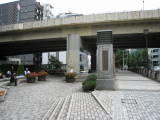 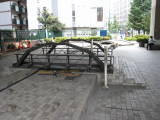 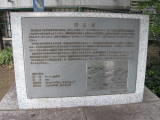
Soon on the left, at the corner of Keika Square, there is an explanation board of the "Monoshiri Encyclopedia" p59 14 Hatchobori's power and concentric mansion. Go straight and cross Yaesu Street at Shinkawa 2-chome. I think this is around the southwestern side of the former Echizen moat. Cross to the right side of Kajibashi Street (in the direction of Chuo-ohashi Bridge) and proceed toward Eitai Bridge.
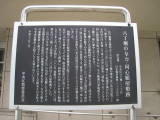 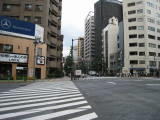 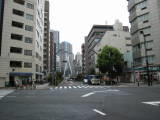
A little before the Eitai Bridge West Signal, a narrow road between the first gas station on the right and the building in front of it, seems to be the trace of Shinkawa. At the end, you can see Shinkawa stone monument p5777 in the distance. In addition, go through Kajibashi Street to Eitai Bridge. There is a monument of p565 seafarer education in Hashizume.
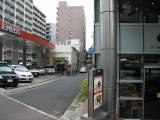 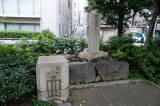 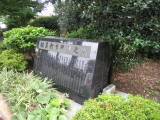
Cross the Eitai Bridge (important cultural property: current extension of life and the sidewalk is narrow) to Koto-ku side. From the bridge to the lower reaches of the Sumida River, the high-rise house on Ishikawajima, Chuo-ohashi Bridge, towers beautifully. There is an explanation board of Eitai Bridge (important cultural property) on Hashizume on the east bank.
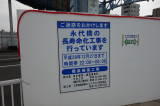  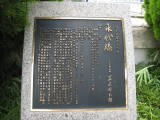
Walk east on Eitai-dori St., turn the sidewalk to the north side of Eitai-dori St. at the traffic light on the way, and proceed east. Cross Kiyosumi-dori while checking the sideways at Monzen-Nakamachi Station, go straight ahead, go north on the east side road of Tomioka Hachimangu Shrine to the east gate, turn right andpromenade Yahatabori on the left. When you enter promenade, you can see Hachiman Bridge in front. There is an explanation monument near the bridge.
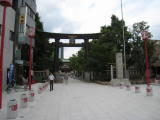 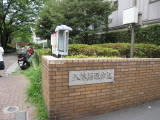 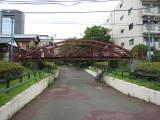
When I saw Hachiman Bridge, what I noticed was that the width was narrow. The monument in Chuo-ku at Danshobashi, the starting point, is 9.0m wide. However, the local explanation board is 2.0m (also the real thing). (There is a slight difference in length.) For these, Rio Suzuki is written in Nos. 119 and 120 of "News from Local Room". It seems that renovation was carried out when the former Dansho Bridge was installed as Hachiman Bridge at the current location.
On the day when I saw Hachiman Bridge for the first time, I saw the energetic elementary school students crossing the school, and the oldest iron bridge (important cultural property) in Tokyo more than 130 years ago was used quietly and quietly. I felt the splendor.
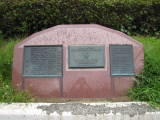 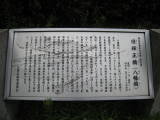 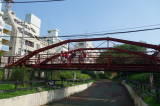
[HK]
July 20, 2016 14:00
<The trigger is ...>
The other day, a veteran guide, Mr. S, guided us to the Hamarikyu Onshi Garden, and heard about the story of elephants who came from Vietnam far during the age of the 8th Shogun Yoshimune. Yoshimune was very interested in the white elephant, which is said to have been carrying Fugen Bodhisattva. The elephant traveled from Vietnam to Nagasaki, stayed in Nagasaki for one year to adapt to the climate of Japan, and then walked to Edo for 70 days.
Fortunately, I had an opportunity to walk around Hamarikyu Garden with a very experienced guide, S-san. Then I learned that there used to be an elephant kept in the garden during the 8th Shogun, Yoshimune's regime. It is told that Yoshimune was very much interested in white elephant, which was told to be ridden by Fugen Bosatsu (Buddhist saint). The real elephant came from Vietnam, stopping over in Nagasaki an year for weather adjustment, and came to Edo by walking. It took 70 days to arrive. 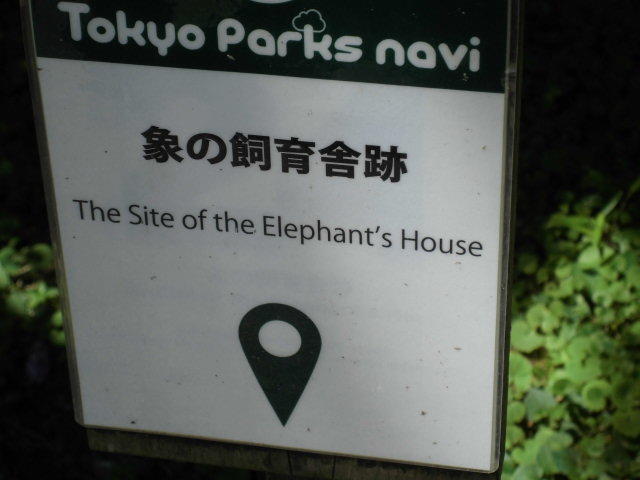
●So, I also like elephants, so I decided to go around Chuo-ku with elephants as a keyword.
I myself am also an elephant lover! So, I decided to walk around the city looking for elephants.
<Elephant at Shinkawa Echizenbori Children's Park>
When you go to Echizenbori Children's Park in Shinkawa, you can meet parent and child elephants. In summer, water erupts like a fountain from the parent elephant's nose, enlivening children's play in the water. A simple child elephant is very adorable for a real mother elephant. The park is located on the site of the residence of Echizen Fukui feudal lord and Matsudaira Echizen Mamoru.
If you visit Echizenbori Park, you can encounter an elephant family. During the summer, water spurts from parent elephant's nose like a fountain and excites children. Unlike realitically made parent, a child elephant is built so simple but it is adorable. The park is made on the ground where use to be the house site of Echizen Matsudaira clan.
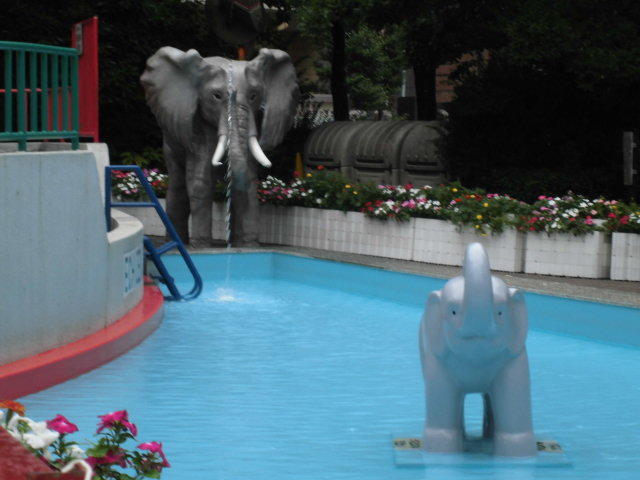 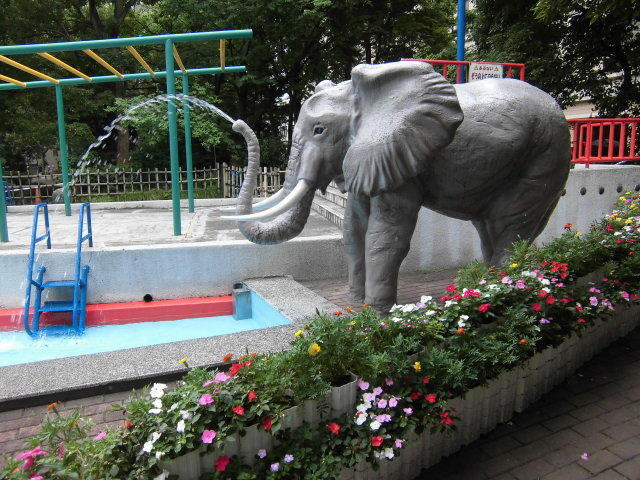 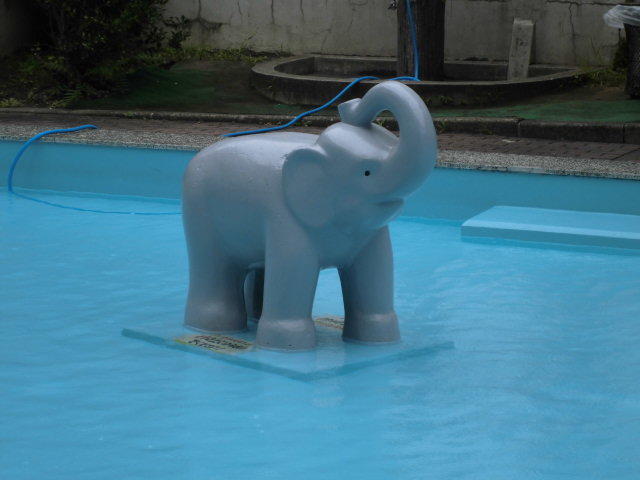
<Elephant of Nihonbashi Takashimaya>
It's too famous, but it's an employee elevator room on the roof of Nihonbashi Takashimaya. It is made in the image of an elephant with a remnant of raising the elephant Takako on the roof in the past. Since the shooting date is under roof construction, it is partially hidden, but the silhouette of the elephant was confirmed.
Very popular spot ! An elevator facility room on the roof of Nihonbashi Takashimaya department store. Takashimaya used to keep an elephant named "Takako" on the roof, and as a memory, this elevator room was designed with an image of an elephant. Unfortunately, the roof was under construction on the date photo was taken but still, one can identify the elephant silhouette.
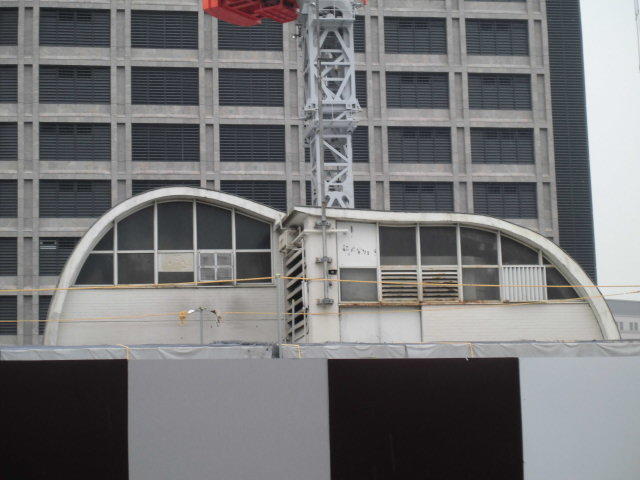
<Elephant of Ginza Delilium Cafe>
The signboard of the pink elephant on the delirium cafe in Ginza is also cute. This is a cafe where you can drink many kinds of Belgian beer. I'm having lunch too. (Ginza Miharakoji corner)
Signboard of Cafe in Ginza is also sweet. A pink elephant! This cafe offers varieties of Belgium and nice meal during lunch time.
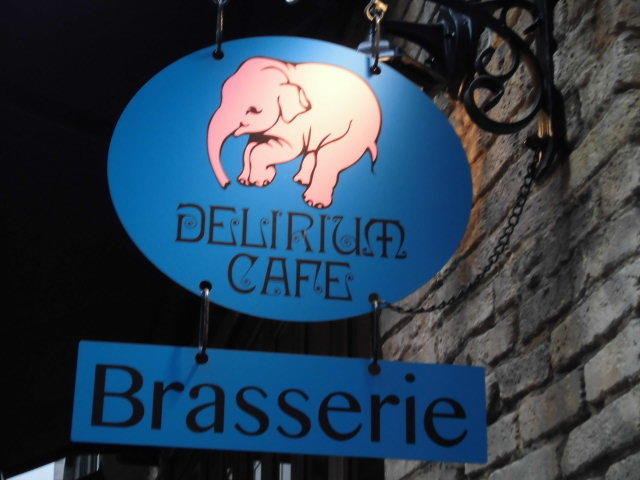
<Elephant of Ginza Dober Street Market>
And the elephant space on the first floor of Dover Street Market in Ginza 6-chome. This is a fashion building, but for some reason there is an elephant space that decorates elephants with brands every season. It's fashionable, but it's a little surprised because it appears as you walk.
Do you know there is a spot so called "Elepaht Space" in Ginza? It is on the first floor of Dover Street Market Ginza. This whole facility is exclusively stylish and Elephant Space decoration changes seasonally. Below are the pictures taken in early July.
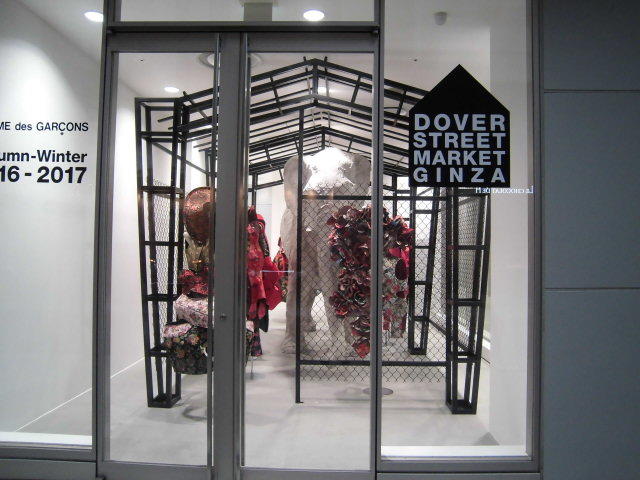
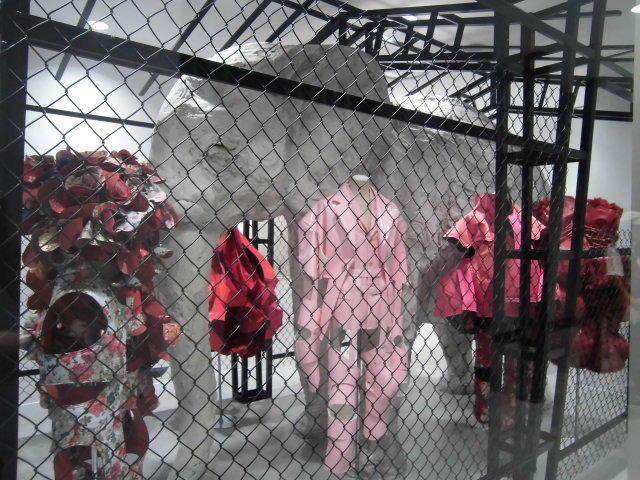
It was like this when I came before.
It was like this in spring.
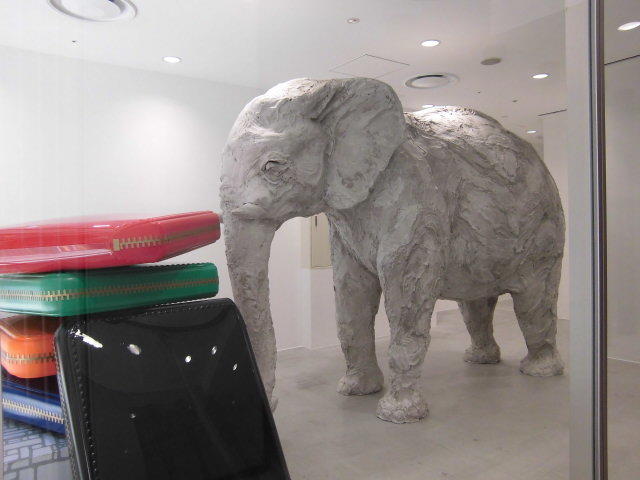
<An elephant of Marronnier Gate>
Finally, there was such a cute display in front of the restaurant at Marronnier Gate. I think there are still many elephant spots, but for the time being, this is the end.
I believe there are many other wonderful displays and facilities, but this is it for this time. Cute yellow elephant was displayed at the restaurant floor of Marronnier Gate in Ginza.
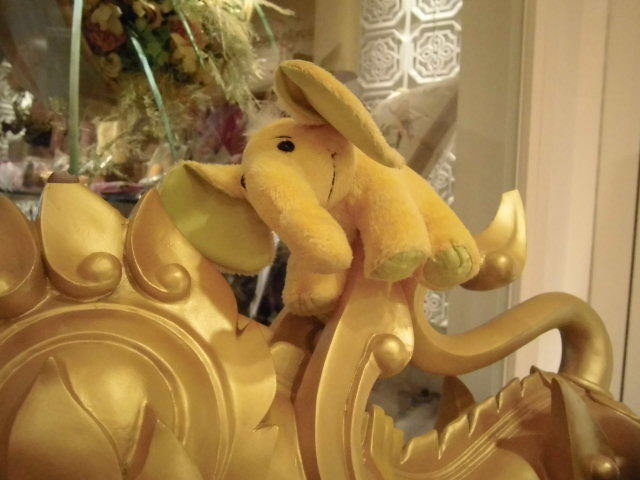
Finally, I would like to express my deepest gratitude to Mr. S and Mr. O who accompanied me for explaining very interestingly and carefully at the Hamarikyu Onshi Garden.
Lastly, I would like to express my sincere appreciation to S-san, who shared her valuable knowledge with me at Hamarikyu Garden, and O-san, who joined our tour.
[O'age]
June 1, 2016 14:00
Along the course of "Chuo-ku Monoshiri Encyclopedia" p110, which can be seen on foot, some proceeded with a little detour. What is the current status of the Olympic Athlete Village in Harumi? What is the location of the "Harumi Trade Fair Venue" monument on p112? It's a walk with two questions.
Start in front of Kachidoki Station and go to the Sumida River Terrace. You can see Kachidokibashi on your right and Tsukiji Ohashi on your left.
①Cross Niijima Bridge under construction, turn left at the corner of a high-rise apartment, and 2 Asashio Kobashi. Turn right on the street behind the Central District Incineration Plant (Daimeibashi Koen-dori St.), and soon 3 Hot Plaza Harumi on your left. Then go off the course of p110 and go further south along Reimeibashi Koen-dori St. to Harumi Wharf Park.
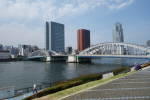 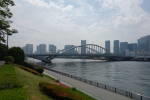 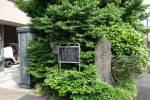  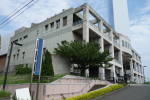 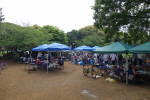
And Harumi Wharf (to the passenger ship terminal). I'll go up to the observation deck. There is a reference image diagram of the athlete village, and you can see the current status of the site below. Get off to the first floor, walk along the bus road and head toward the plaza. Take the Plaza Harumi on your left and look at the main gate of the Central District Incineration Plant on your left. There is a walking path entrance at the northeast corner of the site, and there is a monument to the "Harumi Trade Fair Venue" in the planting on the right side immediately after entering. It seems that the name of the large road in front of this Incineration Plant is Subway Route 314. The next intersection of this road is the Loop No. 2 road. As soon as you turn right, you will cross Toyosu Ohashi and your right will be Toyosu New Market. Turn left (Tsukishima Police Station) and go through Tsukiji Ohashi to the direction of Toranomon Hills. Both directions have not been opened (Ring No. 2).
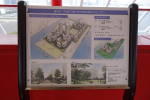 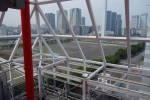 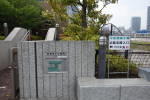 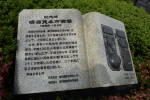 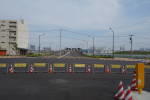 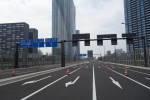
If you go further north on Subway Route 314 without turning left, you will see the explanation version of the "Phantom Expo" secretariat building on the sidewalk. Turn right at the traffic light at Harumi 3-chome. At Ariake-dori St., you will find the Hometown Harumi Archives on the left side of Harumi Ohashi. Turn back the next road and turn right at Harumi 3-chome traffic light (before turning right at police box), go up with the escalator entering Harumi Island Triton Square, and cross Triton Square in the direction of the Asashio Canal. Go out to the sidewalk beside the canal and turn left toward the Triton Bridge. On the way, cross a pedestrian bridge (under construction) that moves sideways across a new pedestrian bridge to reduce congestion and go to Kachidoki Station.
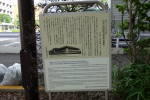 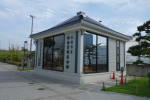 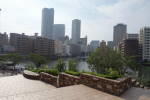 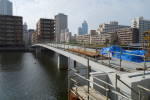 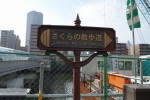 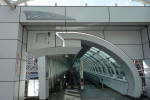
[Koedo Itabashi]
May 26, 2016 09:00
It's still in May, but a series of summer days. When you walk around the city, you get sweaty.
Get off at Shin-Koshinzuka Station on the Toden Arakawa Line and cross the Hakusan-dori St. along the track to the north.
When you see the letters "Oiwadori Shopping Association" (Nishi-Sugamo, Toshima-ku) on the sign that you saw casually
"Really! I wonder if there is this in my heart.
Speaking of Iwa-sama, the main character of the summer classic "Tokaido Yotsuya Kaidan" that cannot be pushed or pushed.
Making full use of the skills polished by the hands of successive masters, the powerful spiritual power will be displayed vertically and horizontally on the stage and on the screen. Japan horror is booming, but it is undoubtedly reigned at the top of Japan as an entity associated with "Kaidan".
If possible, I don't want to be involved personally.
However, the local people have a deep connection and are revered as a place of heart, so the funky naming in such a good sense continues.
It's just the border of rock.
The fact that there is "Oiwa Inari Tamiya Shrine" at Shinkawa 2-chome, Chuo-ku has been mentioned in the correspondent blog before.
On this occasion, I went around Yotsuya, Shinjuku-ku, Shinkawa, Chuo-ku, and Nishi-Sugamo, Toshima-ku, to visit related shrines and temples.
In the early Edo period, there was a family Tamiya family in the Kumiyashiki in Yotsuya Samoncho.
Speaking of the family at that time, he was forced to live a very poor life, as shown in the umbrella-covered inner work.
Under such circumstances, the wise woman who prospered the Tamiya family is Iwasama.
The Yashikigami, which the rock worshiped, was later called "Iwaine-ri" and became the guardian angel of the wives of the family and other unfortunate women.
Based on such tradition, the fourth generation Nanboku Tsuruya creates a masterpiece. When Kabuki was performed during the Bunka and Bunsei era (1825), it gained explosive popularity, and visitors came up.
Yotsuya Oiwa Inari Tamiya Shrine.
The approach from Yotsuya Sanchome Station on the Tokyo Metro will be the closest.
The red flag fluttered, and the strange atmosphere of the original was softened.
Those who come in groups, those who come alone, those who come together.
Oh, two. I have an image of an edge cut, is it okay?
Prosperity of business, safety of the house, improvement of entertainment, and marriage. etc。
Somehow, all-mighty merits and benefits are brought to you.
Do you feel like it's a spiritual test Arata?
On the opposite side of the road of Yotsuya Samoncho, there is a temple in Nichiren sect called Choshozan Younji.
It is a temple founded in the early Showa era, but a wooden statue of a rock is enshrined in the main hall.
There is also a well related to rocks in the precincts.
On the first day of every month except January and August, "Oiwasama Good luck prayer festival" is held, and you can refresh your mind and body through meditation.
Around 1879, Oiwa Inari Tamiya Shrine in Shinkawa, Chuo-ku was transferred to Echizen digging, which is said to be the property of the first Sadanji Ichikawa.
At that time, it was close to the playhouse, and it was said that it was crowded with visitors from the Hanayanagi world and performing arts.
"Baiduishi", a registered cultural property of Chuo-ku, was dedicated by the fourth generation Udanji Ichikawa.
Sadanji Ichikawa and Udanji Ichikawa tend to be confused. This is an arrangement point for sightseeing certification.
There is a grave of Iwasama at Chotokuyama Myogyoji Temple in Nishisugamo.
It was founded in 1624 and moved from Yotsuya in 1909.
Temples and shrines related to the story also visited directly and unraveled the origins, and the transition came to be seen.
Behind this, I felt the wishes and thoughts of the people, supported by the popular “Yotsuya Kaidan” boom and the deep religion.
In the precincts of Oiwa Inari, when a girl with a family suddenly clung to her mother's feet saying "mother", a cold thing flowed through her back.
I must have seen it with a spider. A spider.
[Asunaro]
April 26, 2016 16:00
Flower of Chuo-ku. It is a azalea (including Satsuki).
In the neighborhood of Chuo-ku, azaleas are blooming here and there.
If you look closely at the azalea flowers, you can see a spotted pattern on the upward petals.
This pattern is said to be a "mitsuhyo" that teaches insects what honey should be.

It is also called "guide mark" because it guides insects to carry pollen according to the wishes of the flowers.
It's called. I feel the wonder and fun of plants. There are great things where you don't usually notice.
If you feel like a plant or insect, you may notice other signs.
There are a lot of square parks in Chuo-ku. Why don't you check it near you?
<Chuo-ku homepage, open space park, etc.>
http://www.city.chuo.lg.jp/sisetugaido/koento/index.html
|
Links
|
 This is an interview with Dr. Takagi.
This is an interview with Dr. Takagi. ③ About Yumikai (Yumikai International Art Exhibition)
③ About Yumikai (Yumikai International Art Exhibition)



